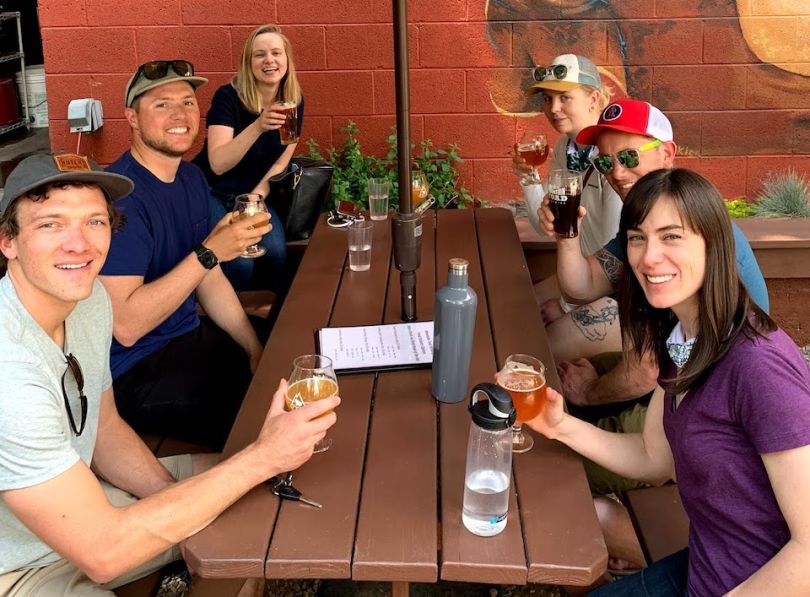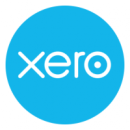“Let go of any preconceived notions of what you think matters to the customer, and just let the customer do the talking.”
Audrey Tan, director of product design at cloud-based accounting software service Xero, shares an important lesson teams should learn when employing the voice of the customer (VoC) methodology: Don’t let what you think customers want get in the way of what they actually want.
The VoC methodology is based on incorporating customer experiences and candid feedback into product design and functionality. To be effective, Tan and customer-facing professionals at other Colorado tech companies like CirrusMD, OrthoFi and Toastmasters strongly agree that combining quantitative and qualitative customer data is a must.
To get an accurate picture, you can’t have one without the other. Quantitative data like Net Promoter Score (NPS) survey scores or bounce rates can be difficult to interpret without context, while qualitative feedback from post-product engagement interviews often lack tangible evidence. Blending the two can help teams generate insights that optimize a product based on what customers really want.

VP of Product and Marketing Julie Kopp said user data is pulled from a number of reports, tests and surveys at telehealth communications platform CirrusMD. Those insights helped the CirrusMD team recognize a need to implement more behavioral health functionality into the platform due to the coronavirus pandemic.
Where is the best place for your company to gather the feedback needed to capture the voice of the customer?
We deliver in-app surveys immediately following a patient’s encounter with a physician to capture information about the experience while it’s fresh. We conduct user research and usability testing with both patients and physicians to fully understand user needs and how they’re using our solution. Across our physician network, we continuously reach out for feedback, observe experiences and assess changing needs. A product team leader is dedicated to the provider and patient experience, monitoring impact as our solution scales so we can respond effectively and prioritize development of the right capabilities.
We also look at the employers, health plans and integrated delivery networks who buy our solutions for their members and employees. We work closely with their teams to understand how telehealth needs are advancing. Qualitative and quantitative research helps us better understand these shifts and deliver the best possible solutions. We leverage surveys, monthly check-ins, data analytics and in-depth customer conversations.
Accessing both qualitative and quantitative data enables a more robust understanding of the user experience.”
How do you synthesize this data in order to capture deeper insights into your customers’ preferences?
We use a visualization tool to pull user data like registration, satisfaction and utilization. Then, we leverage post-encounter surveys to gather additional insights about users’ experiences. Our product and AM teams synthesize broad data sets, pulling insights and anecdotal information to create a full picture of user experiences. Accessing both qualitative and quantitative data enables a more robust understanding of the user experience, and in turn, helps us deliver greater benefits to our employer and health plan customers.
Customers receive full monthly reports from their success manager, and can also access dashboard reports to continuously monitor performance. We can track success against established goals, alleviation of pain points and achievement of a customer’s unique metrics.
How do you leverage VoC to improve the different stages of the customer journey or to inform strategy?
During COVID-19, we saw an enormous uptick in encounters with behavioral health components, as patients used the platform not only for physical health issues, but also concerns about anxiety, stress, sleeplessness and depression. We recognized a need to enhance our offering so we added a new head of psychiatry, created dedicated clinic hours focused entirely on behavioral health issues and supported the needs of our primary care doctors with behavioral health specialists.
In-app, post-encounter surveys and user comments provide insights into how our solution is working. By combining all those insights, we can evaluate where to prioritize and focus efforts.

OrthoFi — a software solution provider for the orthodontic industry — combines customer observation and interviews with data to build comprehensive user journeys. VP of product John Truchel said those journeys take work to build, but the insights they provide are well worth it.
Where is the best place for your company to gather the feedback needed to capture the voice of the customer?
COVID-19 forced us to leverage more multi-channel methods to gather feedback from users. We took advantage of the fact that many orthodontic practices were closed during the early months of COVID, which allowed their staff more time to speak to us via phone calls, customer chat channels and video conferencing. We also have a product advisory board made up of a diverse group of orthodontic practices that provide candid feedback. This group has been invaluable for us in evaluating early product concepts and features without going through the normal challenge of recruiting and building relationships for VoC.
We also utilize Pendo inside of our software to provide a consistent area for our customers to provide feedback at the point of use. Feedback automatically gets dropped into a Slack channel for our product team and others to see so that we can positively intervene where appropriate.
We create user journey maps and personas based on the VoC we collect.”
How do you synthesize this data in order to capture deeper insights into your customers’ preferences?
We typically like to pair qualitative with quantitative data to support user voices and impact their pain points. We use NPS data in surveys and qualitative research questions. To synthesize qualitative data, we use ‘rainbow sheets’ to find common themes in responses using Google Sheets. When appropriate, we create user journey maps and personas based on the VoC we collect. It’s an investment of time, but the return is a much better understanding of the current process users go through, pinpointing specific areas that our product can help alleviate friction.
Regardless of the VoC methods utilized, we make sure to present our findings in a way that is consumable to our extended team. This practice is typically done through simple slide decks that walk the audience through our approach and key findings. We wrap up these VoC decks with suggestions and paths forward based on those user needs.
How do you leverage VoC to improve the different stages of the customer journey or to inform strategy?
Our product and design teams work closely with our account managers to understand what common customers need. We established internal operating groups that consist of cross-functional teams aligned to a specific part of our product. For example, we have an integrations operating group that consists of sales, marketing, account management, and implementation and training team members. They meet bi-weekly to align on important third-party vendor partnerships that might solidify new sales or create a better customer adoption experience.
We also made deliberate strides to include a “zero” sprint for research before large initiatives, allowing us the time to solve user needs. We identify, document and validate all key assumptions as early as possible to make sure customer-facing teams share a consistent and accurate message to users about upcoming product enhancements or changes

Fielding the voices of Xero’s customers helped Audrey Tan learn the difference that geography can make in how users might adopt the company’s product. Tan said discovering those differences helped her team pinpoint who the right users would be for certain aspects of the product.
Where is the best place for your company to gather the feedback needed to capture the voice of the customer?
We meet the customer wherever they’re at, which could mean many things. It could mean visiting and observing them in their natural workspace, or understanding their mindset by listening intently to what they share on a video call. To me, the most important thing is to let go of any preconceived notions of what you think matters to the customer, and just let the customer do the talking.
To make any insight trustworthy, there needs to be a clear hypothesis and strong controls.”
How do you synthesize this data in order to capture deeper insights into your customers’ preferences?
To make any insight trustworthy, there needs to be a clear hypothesis and strong controls throughout the entire process. We have dedicated research and data analytics teams that use a combination of Microstrategy, Google Analytics, MixPanel and other tools that help paint a picture of what our users are doing and how to form a strategy around it.
How do you leverage VoC to improve the different stages of the customer journey or to inform strategy?
We leverage VoC to help us tailor Xero to various geographic markets. Xero is a global company, and I was surprised to learn how much accounting and small business bookkeeping practices vary by country. For example, one of our many research studies revealed that small businesses in the U.S. have different relationships with their accountants compared to SMBs in New Zealand. Learning that insights from customers helped us identify the right users for certain tasks within our product.

While the Toastmasters platform helps its users become public speakers, Senior User Experience Designer Van Trieu said her team wants customers to be better platform users. Trieu’s team interprets usability studies, stakeholder feedback and Google Analytics insights to build more intuitive experiences for users.
Where is the best place for your company to gather the feedback needed to capture the voice of the customer?
One way to capture the customer voice is by doing user interviews and usability studies throughout the design and development process. Asking stakeholders and members to give feedback on design mockups and prototypes ensures that the product team is solving for the right problems. It also allows us to test our assumptions and make sure that we are designing innovative solutions that will make our members and leaders lives easier.
The UX team also measures project outcomes by looking at changes in user behavior.”
How do you synthesize this data in order to capture deeper insights into your customers’ preferences?
Our research department conducts a lot of surveys and interviews with our members and officers. Our team members also give their input on our design outcomes. Outside of looking at Google Analytics and performing usability studies, the UX team also measures project outcomes by looking at changes in user behavior like click rates, visits and time spent performing certain tasks. By using both qualitative and quantitative data, we get a more accurate picture of what our users are doing when they interact with our website or any given digital product.
How do you leverage VoC to improve the different stages of the customer journey or to inform strategy?
The UX team frequently meets with the product and development department, and serves as the advocates for our members and leaders throughout the organization. We help to flush out complex design problems and come up with solutions that will meet our users’ needs while achieving business objectives.













